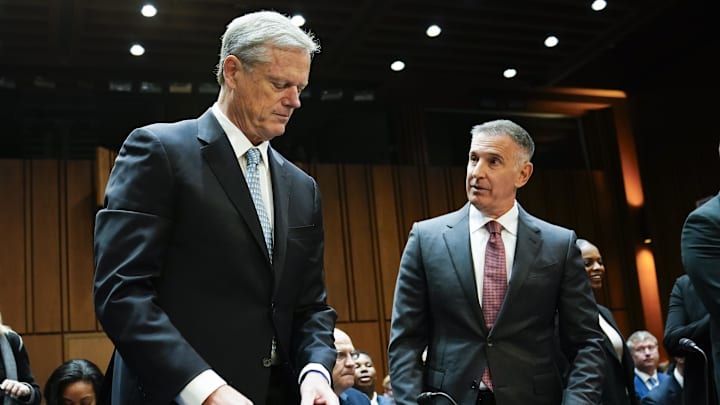The NCAA is once again reshaping the college football landscape with sweeping changes to transfer portal rules that will go into effect for the 2026–2027 season. With tighter windows and fewer opportunities to enter the portal, the new structure is designed to bring more order and clarity to one of the most chaotic aspects of the sport.
While these rules won’t apply until next season, it's hard not to wonder how things might have played out differently for programs like Oklahoma State, who are currently navigating the fallout from a midseason coaching change and the resulting mass exodus of players through the portal.
A Shorter, More Defined Transfer Window
One of the most impactful changes is the establishment of a single, 15-day transfer window, which will now open on January 2 and close on January 16. This replaces the current format that included both a winter and spring transfer window. While players will only have this two-week span to enter the portal, they won’t be required to commit to a new school within that time frame. Instead, decisions on admissions and enrollments will vary depending on institutional policies.
This change is a welcome shift for coaches, who will finally be able to assess their rosters with more confidence heading into offseason workouts and spring practice. Under the old system, coaches often found themselves in a holding pattern, unsure whether key contributors might bolt during the later spring window. That uncertainty led to situations where even spring games were downplayed or scaled back out of fear that other programs might scout and poach breakout performers.
Graduate Transfers Now Restricted by the Same Window
Another significant change affects graduate transfers, who under the current rules are allowed to enter the transfer portal at any time. Beginning with the 2026–2027 season, graduate transfers will also be subject to the January 2–16 window, just like underclassmen. This closes a major loophole that previously allowed veteran players to shift programs freely year-round, often creating late-season surprises for coaching staffs already stretched thin.
This adjustment will further help coaching staffs plan and manage rosters more effectively. Had this rule been in place now, Oklahoma State may not have been at risk of losing grad transfer talent unexpectedly mid-season. It would have given the Cowboys more certainty around veteran leadership during an already turbulent time.
New Rules for Head Coach Firings: A Tighter Window, Delayed Start
One of the more nuanced changes in the new system addresses what happens when a program fires or parts ways with its head coach. Under current rules, the dismissal of a head coach immediately opens a 30-day transfer portal window for players to enter, regardless of the time of year. That’s the situation Oklahoma State currently finds itself in, with a month-long open portal that began as soon as Mike Gundy was let go.
Starting in 2026, that process will be significantly more controlled. Instead of an immediate 30-day window, players will now have to wait five days after the hiring or announcement of a new head coach, and from that point, will only have 15 days to enter the portal.
For Oklahoma State, that would have drastically altered the current player movement timeline. Rather than triggering a wave of departures in late September, the roster would have remained intact at least until the Cowboys named a new coach. That five-day delay acts as a buffer period and the shortened 15-day window ensures that the program doesn’t bleed players for an entire month.
This change also limits the predatory aspect of the transfer portal that many coaches have been frustrated with, where opposing programs use long transition windows to scout and recruit from coaching-change rosters.
What This Means Moving Forward
The NCAA’s new transfer portal rules are a clear response to growing concerns from coaches, administrators, and even players about the volatility of college football rosters. While the portal has empowered athletes with greater freedom, it has also created a wildly unpredictable environment that makes long-term planning and development difficult.
For programs like Oklahoma State, who found themselves caught in a perfect storm of coaching changes and midseason departures, these rules would have provided much-needed structure. The Cowboys might not be facing such a dramatic talent drain if the new system — with its single January window, graduate transfer limitations, and post-firing delay — were already in place.
Though the rules won’t officially go into effect until next year, they reflect a broader trend toward rebalancing the power dynamics between players and programs. And while there will always be challenges during coaching transitions, schools will at least have a more predictable framework for navigating them
